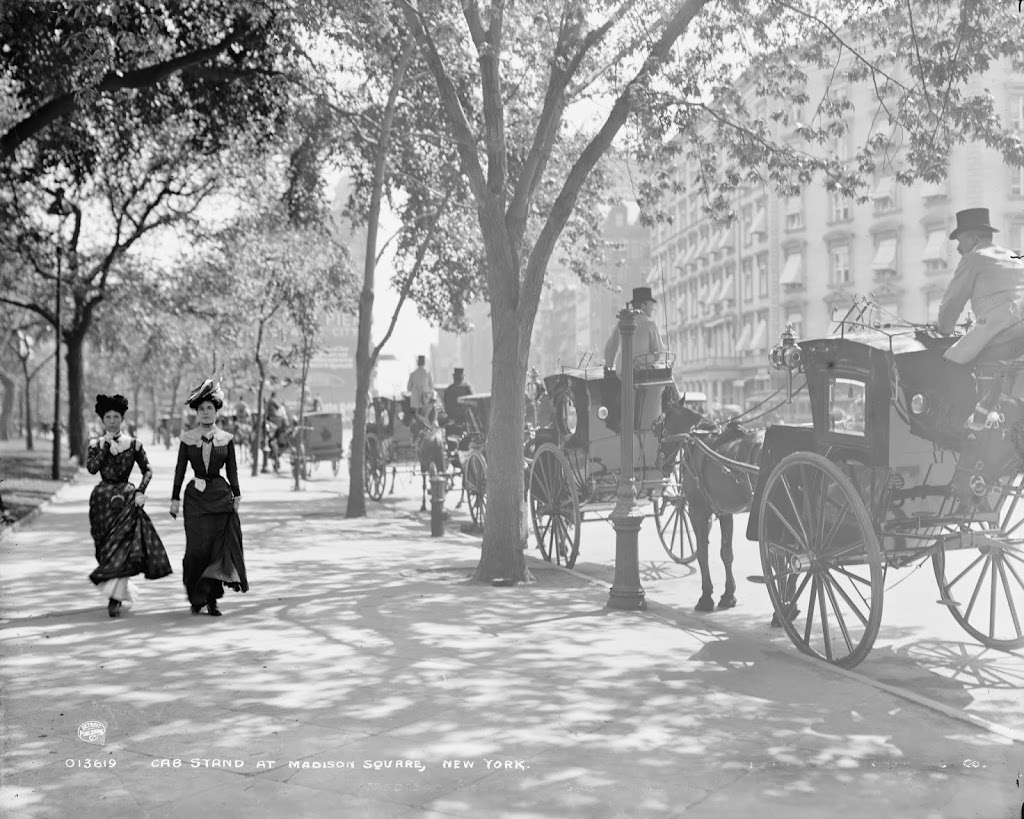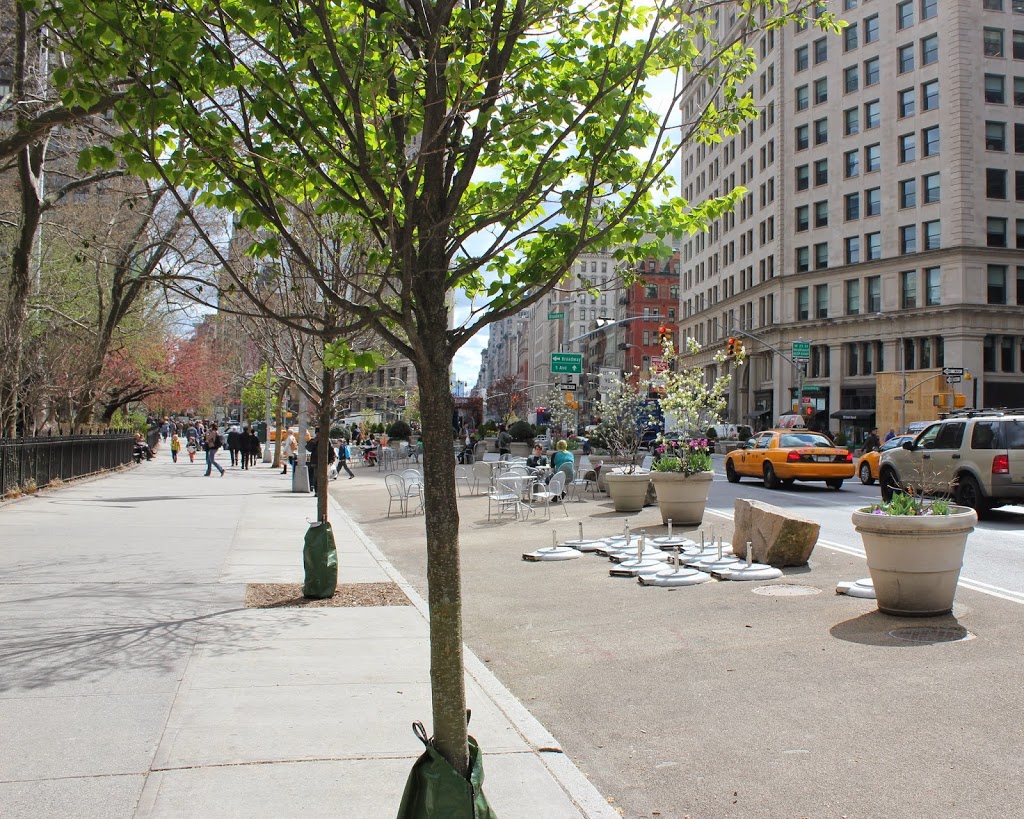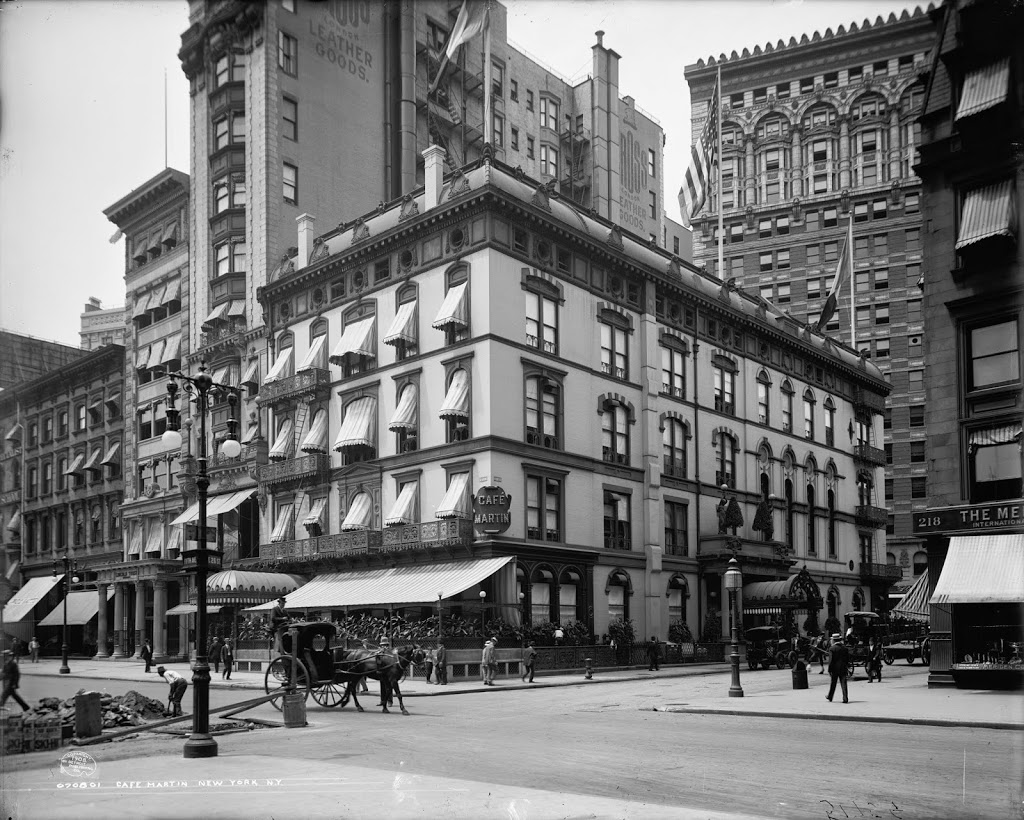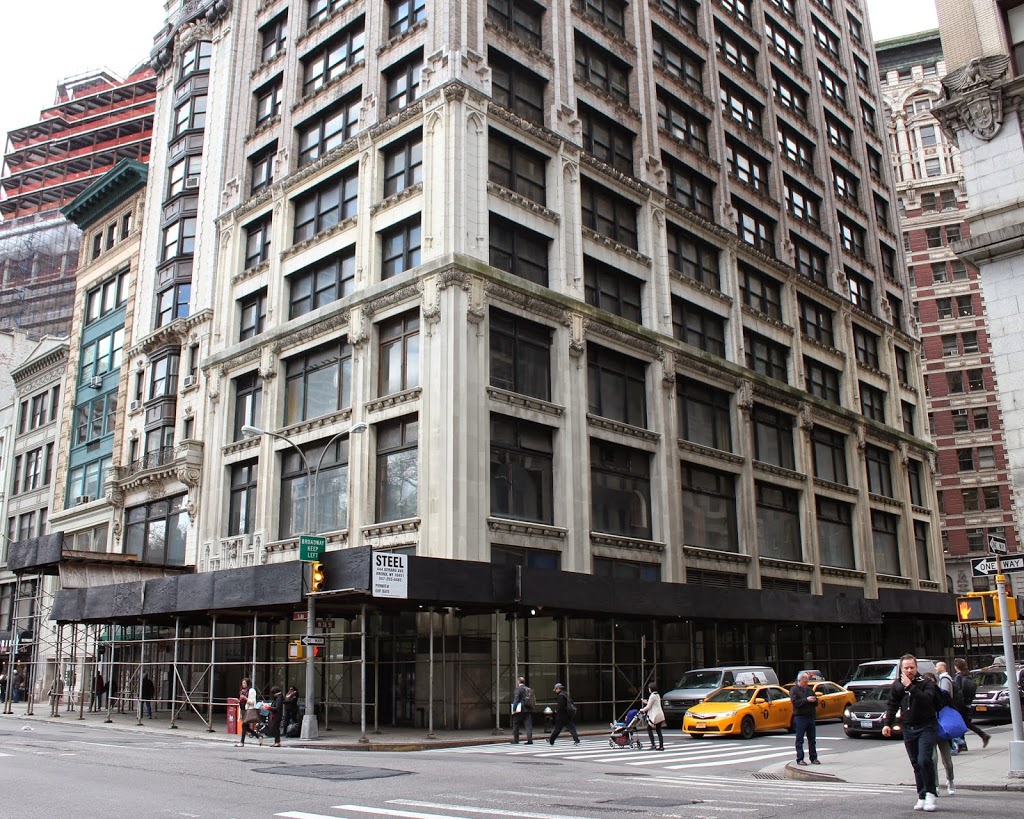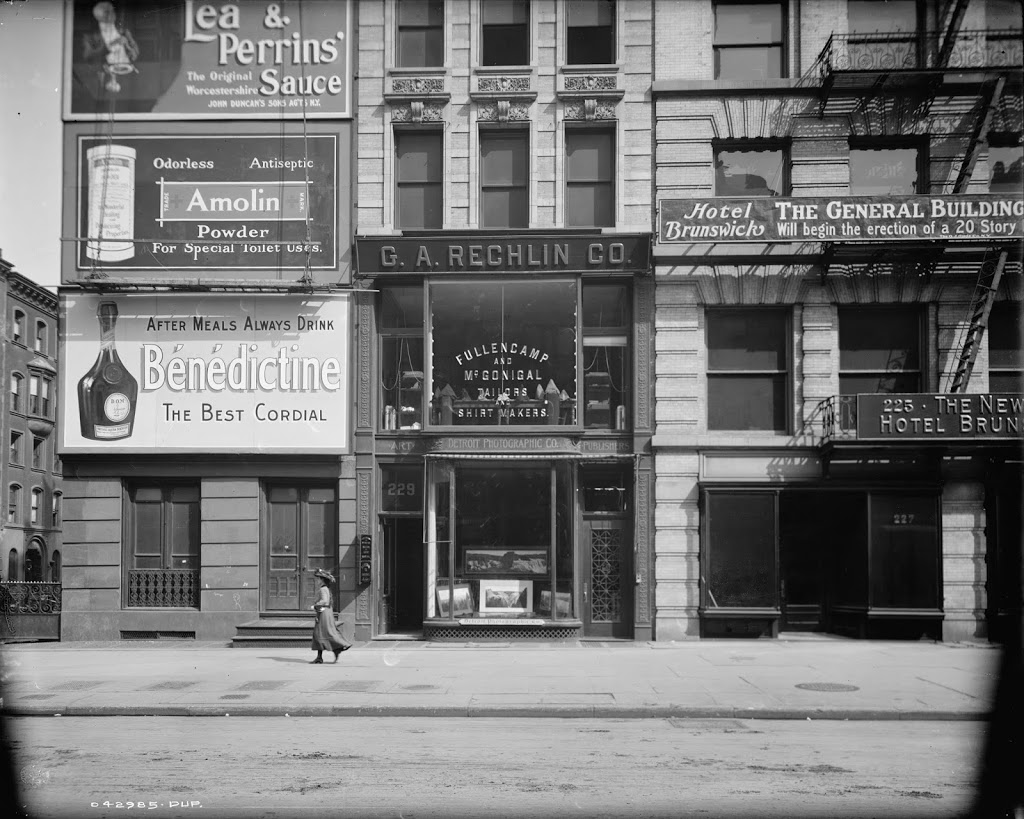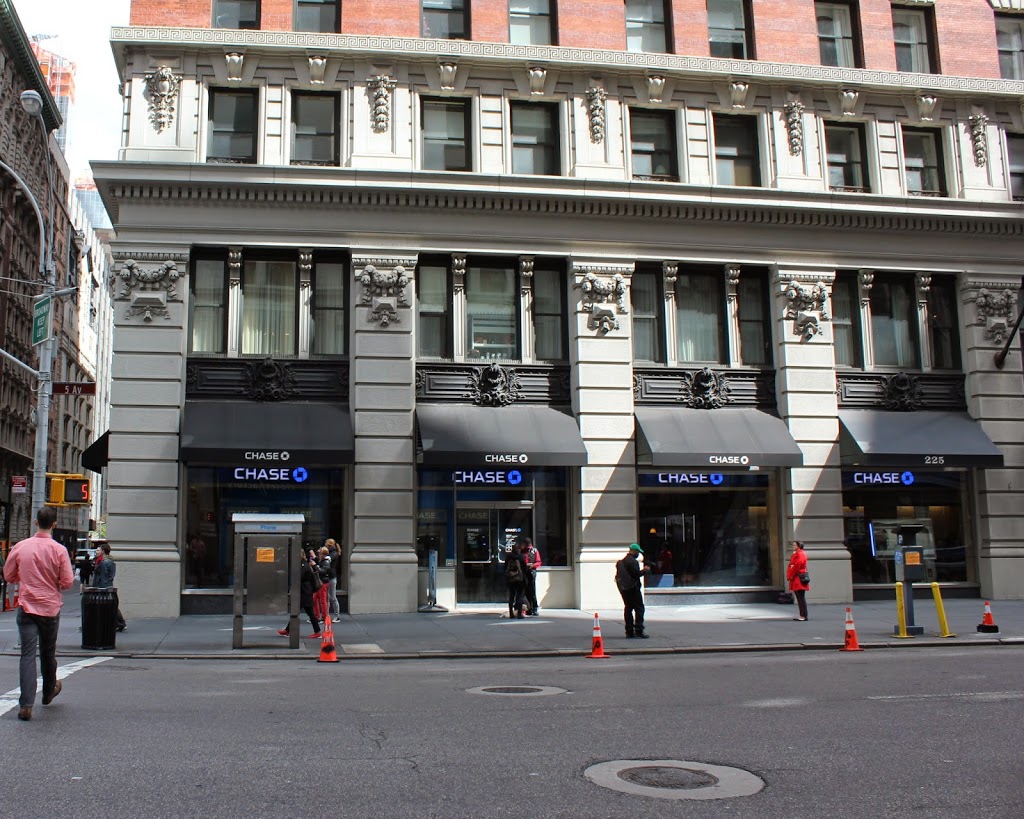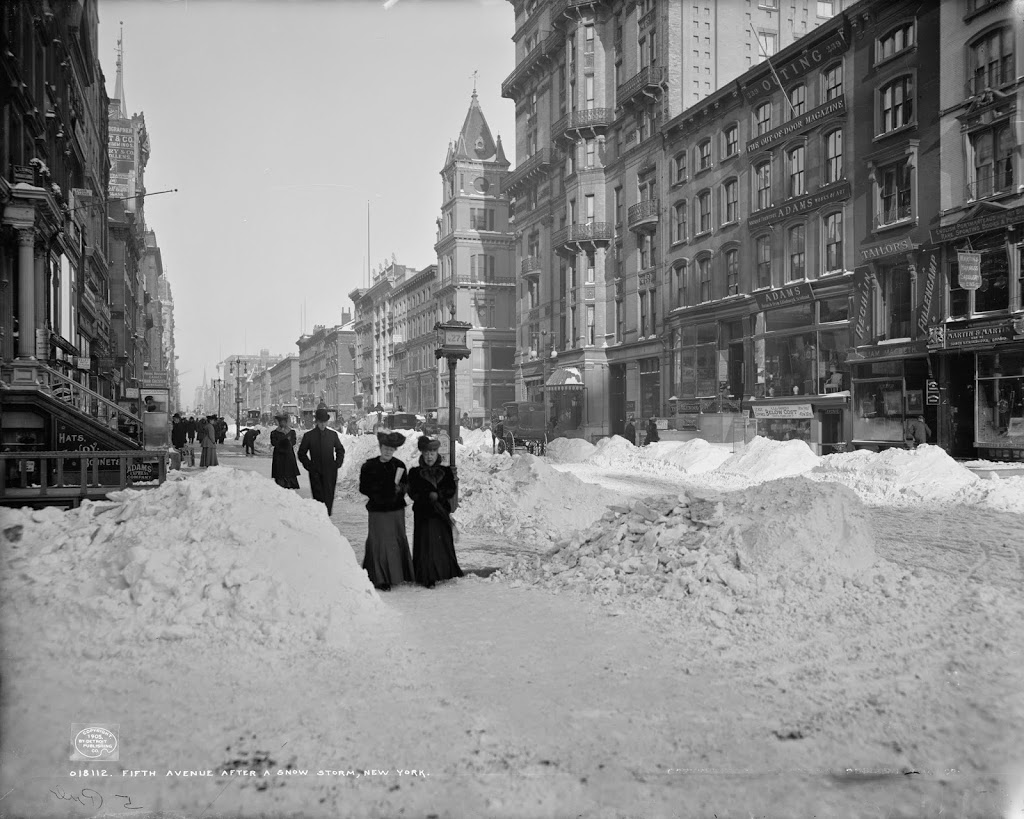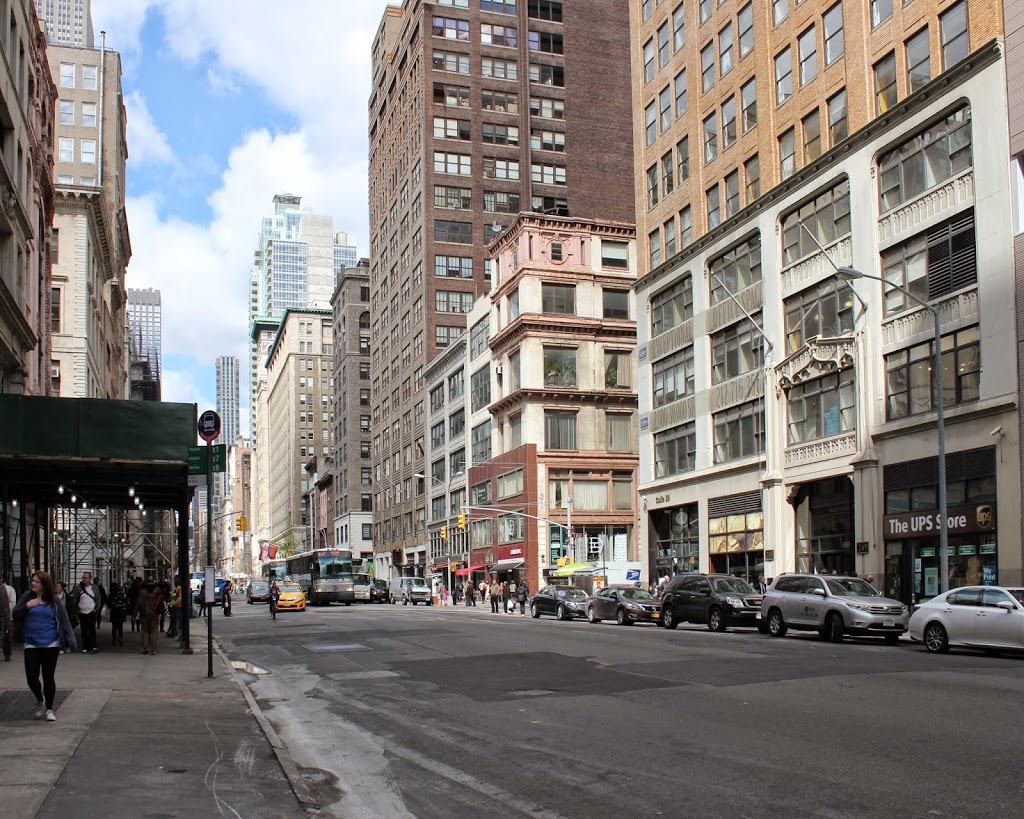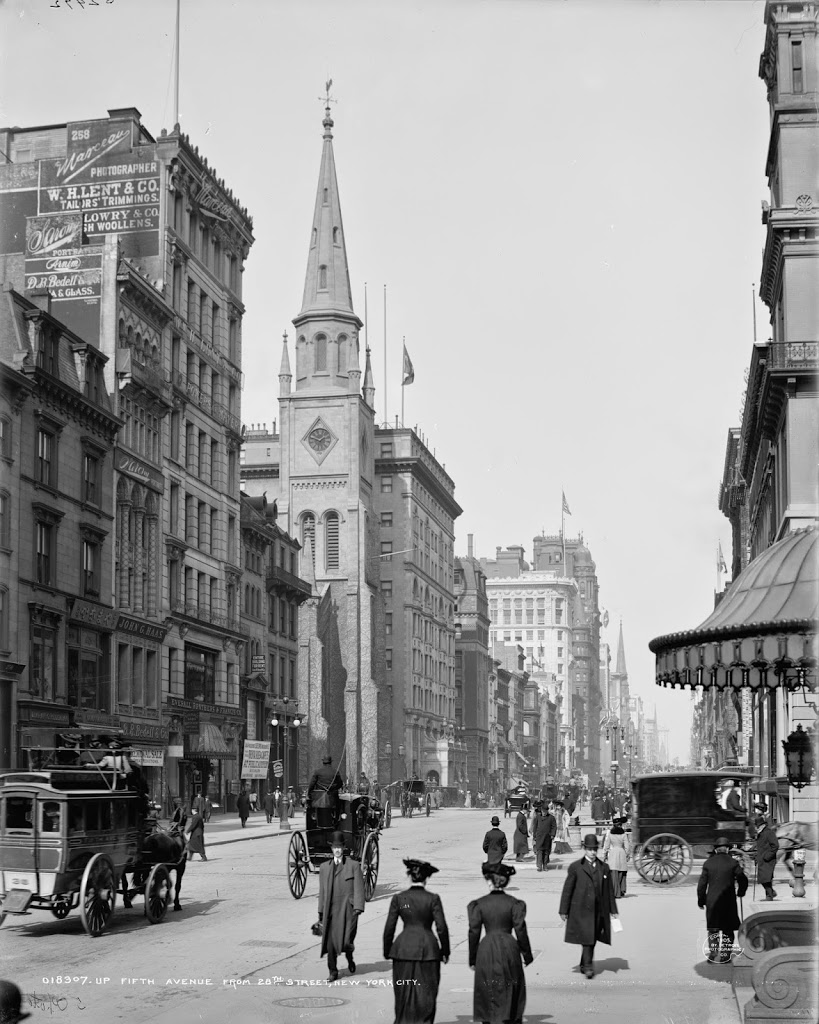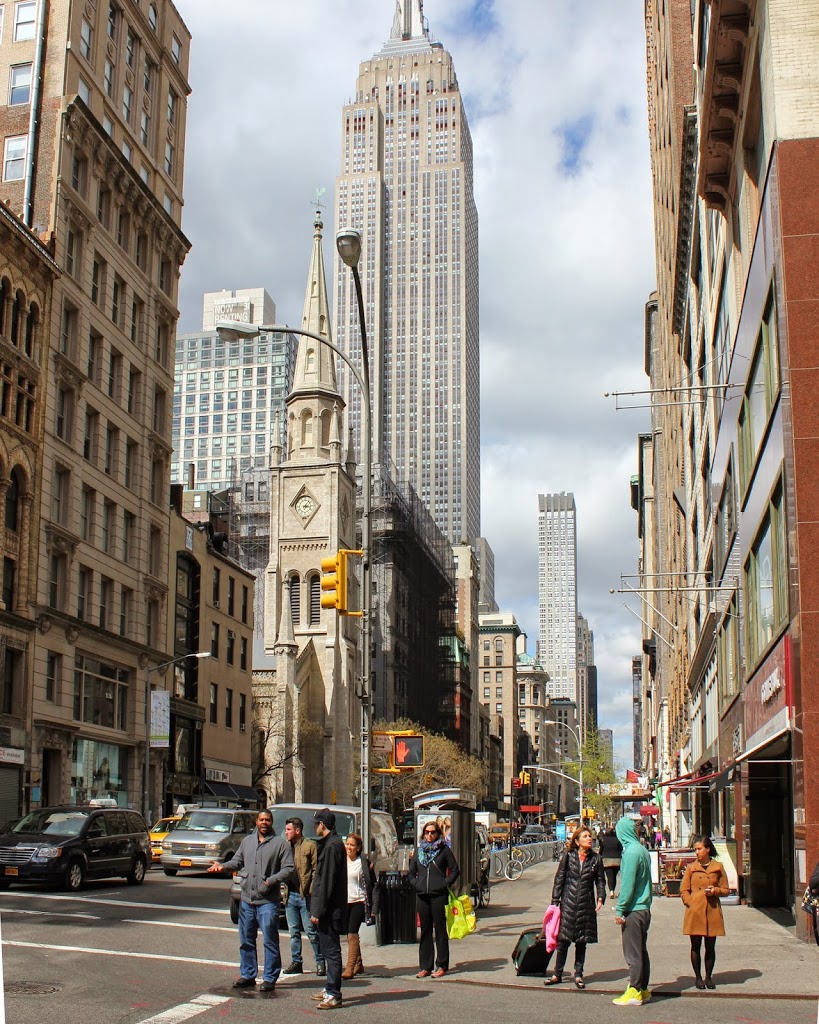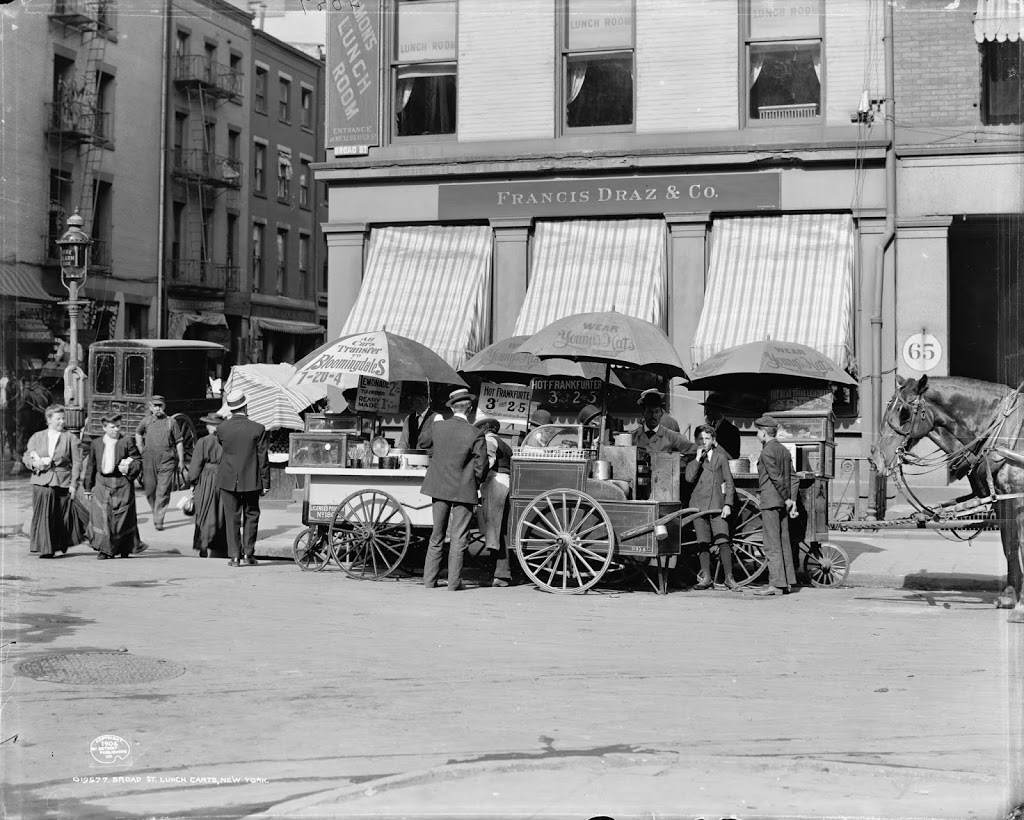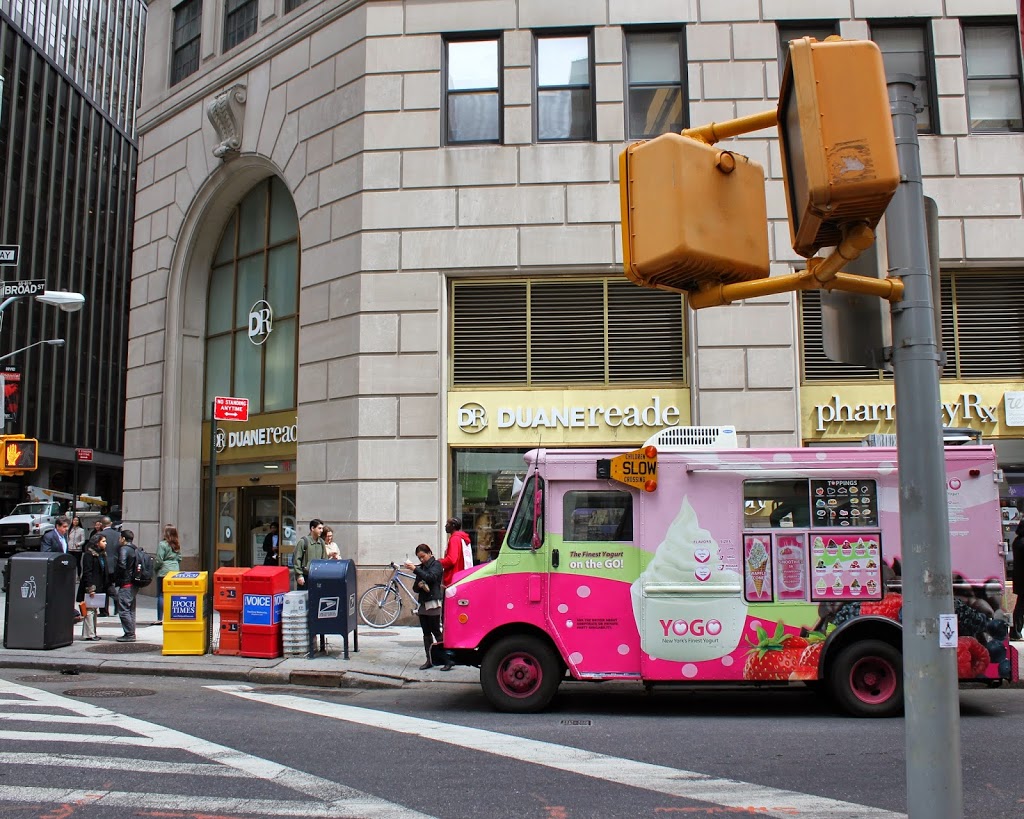Looking south on Fifth Avenue, with Madison Square Park on the left and waiting cabs on the right, around 1900. Image courtesy of the Library of Congress, Detroit Publishing Company Collection.
The same scene in 2014:
I was hoping to be able to get some cabs in the present-day photo, but this section of Broadway at Madison Square is closed to vehicular traffic. Still, there are a couple cabs visible in the difference, which contrast with the line of horse-drawn cabs of over a century ago. Otherwise, though, the scene doesn’t seem all that different; Madison Square is still a busy intersection, although internal combustion engines have replaced draft animals, and fashion styles have changed a bit. Some of the buildings are still there, including the red-brick building just beyond the building on the far-right of the 2014 photo, although the Flatiron Building (barely visible, obscured by trees in the 2014 photo) didn’t exist yet, if the 1900 date for the first one is accurate. It doesn’t appear to be visible in the photo, but the trees could hide some of the construction work.

